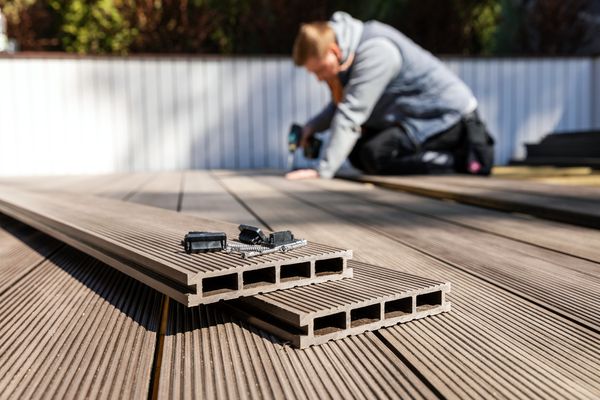When Trex Company Inc. (TREX 1.12%) reported an estimate-crushing earnings report after the market closed on Oct. 30, investors were rewarded with a huge day when shares started trading on Oct. 31. By the end of the day, Trex's stock had jumped a whopping 25% to more than $107 per share, a tidy sum most investors would be happy with over a couple of years.
So what's driving Trex's results and its profits up? In short, operating leverage that's throwing off a ton of cash, with strong -- and growing -- demand for its products. Even better, there are some signs that demand is on track to remain strong. Let's take a closer look.

Image source: Trex Company.
How market share growth and operating leverage are paying off
Trex reported net sales of $140 million in the quarter, a 32% increase from last year. Part of that big jump was related to the acquisition of SC Company, now called Trex Commercial Products, which was announced last quarter but closed one month into the third quarter and generated $9 million in revenue. Yet even with this "new" revenue, Trex's core decking business, now called Trex Residential Products, reported 23% sales growth, well ahead of the mid-teen increase management forecast at the end of the second quarter.
Trex's incremental revenue growth has consistently delivered huge profit growth over the past year. Net income was $20.1 million, or $0.68 per share. That's 258% and 262% higher, respectively, than in the year-ago quarter. Adjusting for a $9.8 million non-recurring warranty reserve charge Trex took last year, net earnings were up 34%. Earnings before interest, tax, depreciation, and amortization (EBITDA) increased 47%.
The biggest thing that has earnings growing faster than revenue is operating leverage, as Trex makes a higher volume of product without having to increase certain fixed expenses. CEO Jim Cline says the company's incremental margin -- that is, the margin it makes on volume that's above and beyond last year's levels -- will be above 50% for the full year. That's why Trex's residential product gross margin increased to 40.6% in the third quarter, up from 28.2% last year.
How the SC Company acquisition is working out
As noted, Trex's new commercial-products segment, which didn't exist until SC Company was rolled into the company in the third quarter, contributed $9 million in the second quarter in the two months it was part of the company.

Image source: Trex.
A few things of note about this new segment. First, it will generate lower gross margin percentage than the residential-products segment has historically, but it has several things that management likes about it, including the ability to leverage its current operating assets for significantly higher volume. Management has also commented that the legacy SC Company assets won't need any significant or recurring investments to support or maintain, so what it lacks in gross margin, it will almost certainly make up in strong long-term cash-flow generation.
CEO Jim Cline also said the company is already seeing benefits from SC Company's expertise in developing new railing products for the residential market. He said in one case, a project that management was expecting a year to jointly develop is now expected to take only a few months before the company will be able to introduce new products. While it doesn't expect there to be much overlap in being able to sell more Trex decking with commercial railing projects, it's interesting to see a surprise benefit in residential product development.
Looking ahead: More of the same?
As Trex's volume has increased, and its operating leverage has accelerated cash generation substantially, management is looking for ways to put that cash to work, and buying SC Company was one way. The company was able to use operating cash flow to fund the entire $71.5 million purchase and still end the quarter with a stronger balance sheet and more working capital than it had one year ago.
At the same time, management says remodeling activity remains "robust," which should bode well for the company's recent sales gains to continue, particularly when factoring in that much of Trex's growth is a product of taking market share away from both its alt-wood competitors, and from regular wood decking. According to the most-recent data, wood commands 84% of board-feet of decking sold in North America, meaning Trex and its competitors command about 16% of total share. Trex makes up close to 45% of that amount, so a little math says Trex had less than 8% of total decking market share in North America. There's still a lot of room for Trex to grow.
As long as the economy and the remodeling sector remain relatively strong and healthy, there's plenty of reason to expect to see Trex continue delivering steady growth as it benefits from strong demand and gains market share. How much longer will that strong run last? It's impossible to say when the market will slow and take its next eventual breather. In the meantime, it seems that Cline and company are intent on continuing to drive costs down and operating leverage up, while also putting Trex's strong cash flows to work when the right opportunities come along.






